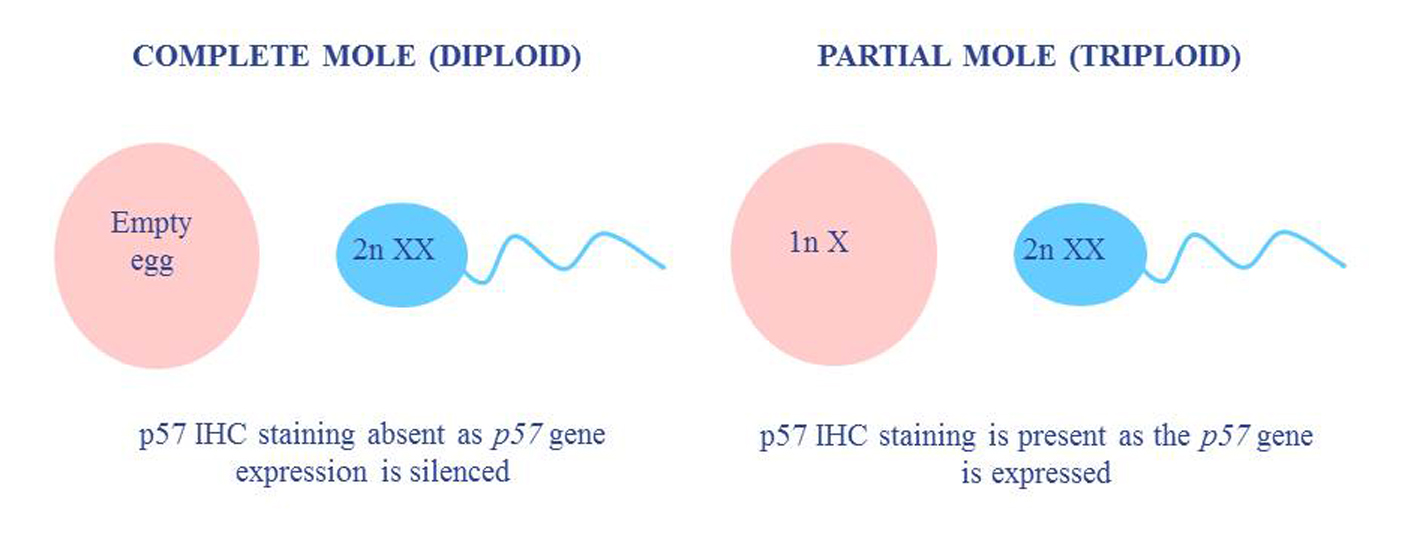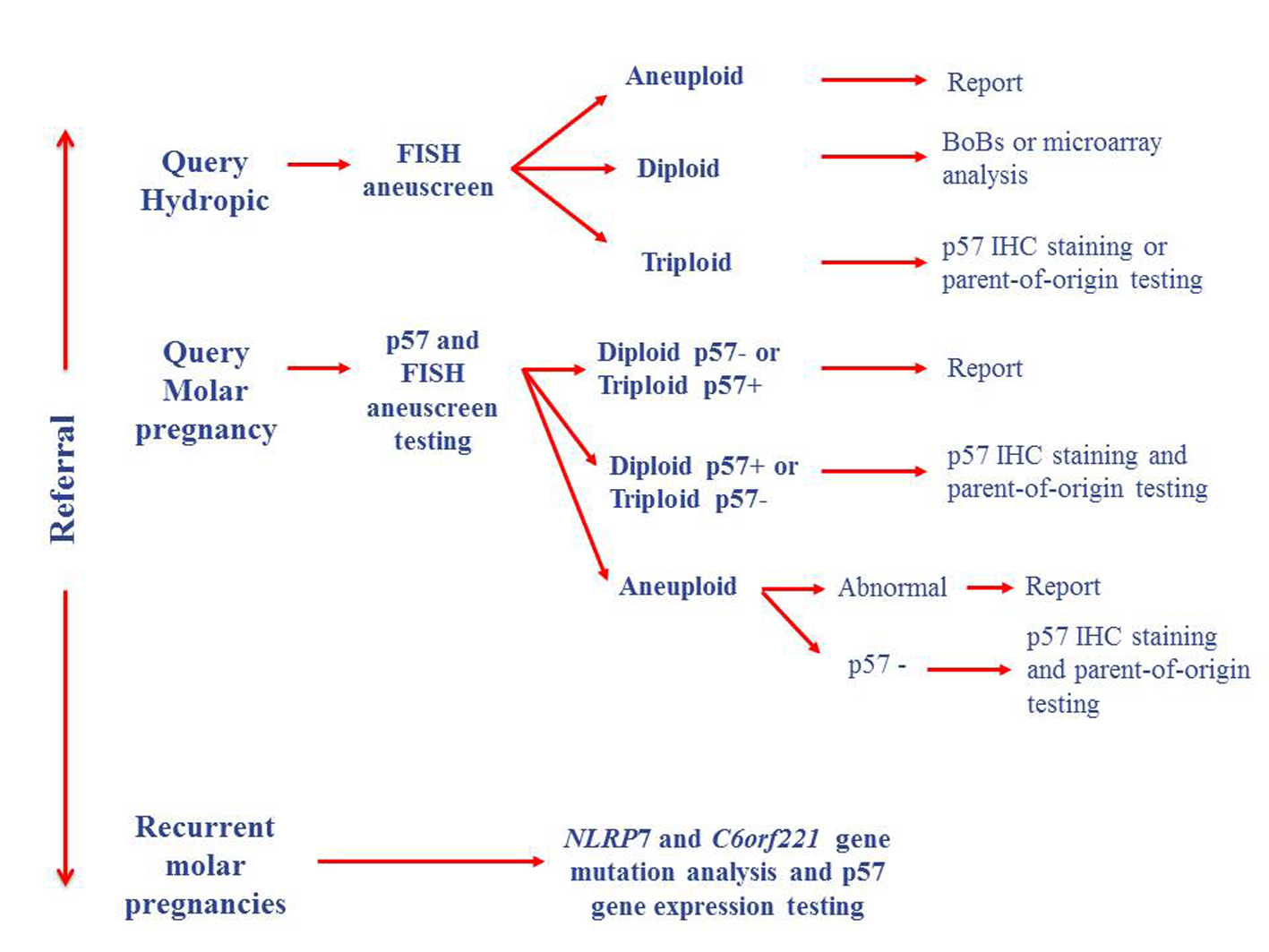
Figure 1. A comparison of the typical ploidy and p57 status in molar pregnancies.
| Journal of Clinical Medicine Research, ISSN 1918-3003 print, 1918-3011 online, Open Access |
| Article copyright, the authors; Journal compilation copyright, J Clin Med Res and Elmer Press Inc |
| Journal website http://www.jocmr.org |
Original Article
Volume 7, Number 12, December 2015, pages 961-966
The Diagnosis of Choriocarcinoma in Molar Pregnancies: A Revised Approach in Clinical Testing
Figures


Tables
| Characteristic | Partial mole | Complete mole |
|---|---|---|
| Development | Some fetal development but malformed | No fetal development (cord, membrane present) |
| Villi | Some enlarged; two populations of villi Blood vessels and fetal red blood cells present Scalloped outlines with pseudoinclusions and invaginations Focal trophoblast proliferation Minimal trophoblast atypia | All enlarged Blood vessels absent Round to ovoid Prominent cisterns Circumferential trophoblastic proliferation Trophoblast atypia present |
| Origin | Both maternal and paternal | Paternal only |
| Genetics | Triploid | Diploid (or tetraploid) |
| p57 IHC stain | Positive | Negative |
| Initial referral reason | ||||
|---|---|---|---|---|
| Molar pregnancy referral (n = 70) | Exclude molar pregnancy referral (n = 39) | Hydropic/Other referral (n = 89) | Total (n = 198) | |
| Final diagnosis | ||||
| Molar pregnancy | 40 | 5 | 12 | 57 |
| Hydropic pregnancy | 23 | 30 | 69 | 122 |
| Other | 7 | 4 | 8 | 19 |
| Percentage correctly diagnosed (%) | 57.1% | 87.2% | 86.5% | |
| Category | P57 stain | Sex | Other abnormality? | Maternal genome status and possible causal mechanism |
|---|---|---|---|---|
| Complete mole | Positive | XX | No | Present - retained maternal chromosome 11/trisomic rescue |
| Partial mole | Negative | XXY | Triploid | Absent - dispermy or mutation in maternal p57 allele |
| Negative | XXX | Triploid | Absent - dispermy or mutation in maternal p57 allele | |
| Positive | XX | No | Present - biparental mole | |
| Negative | XXY | Triploid | Absent - dispermy or mutation in maternal p57 allele | |
| Negative | XXY | Triploid | Absent - dispermy or mutation in maternal p57 allele | |
| Hydropic | Negative | XY | T18 | Absent - dispermy, biparental mole or mutation in maternal p57 allele |
| Negative | XX | T21 | Absent - dispermy, biparental mole or mutation in maternal p57 allele | |
| Negative | XY | No | Absent - dispermy, biparental mole or mutation in maternal p57 allele | |
| Other | Negative | XX | No | Absent - dispermy, biparental mole or mutation in maternal p57 allele |
| Category | Sex complement | Number of cases | p57 stain |
|---|---|---|---|
| Complete mole (p57-) | XX | 8 | One case atypical (p57+): focally positive staining in the cytotrophoblast |
| XY | 0 | ||
| Partial mole (p57+) | XXY | 14 | Three cases atypical: two were p57 negative, and one showed absent staining in the basal cytotrophoblast |
| XYY | 1 | Suboptimal | |
| XXX | 3 | One case atypical: p57 negative | |
| XX | 1 | One case: p57 positive | |
| Total | 27 | 7 |